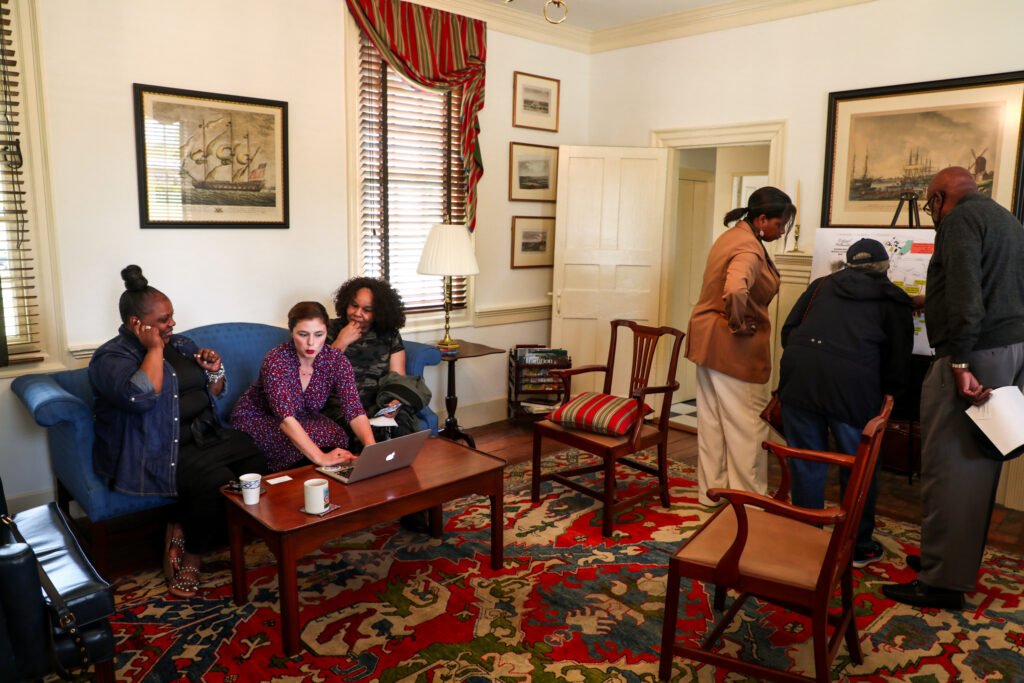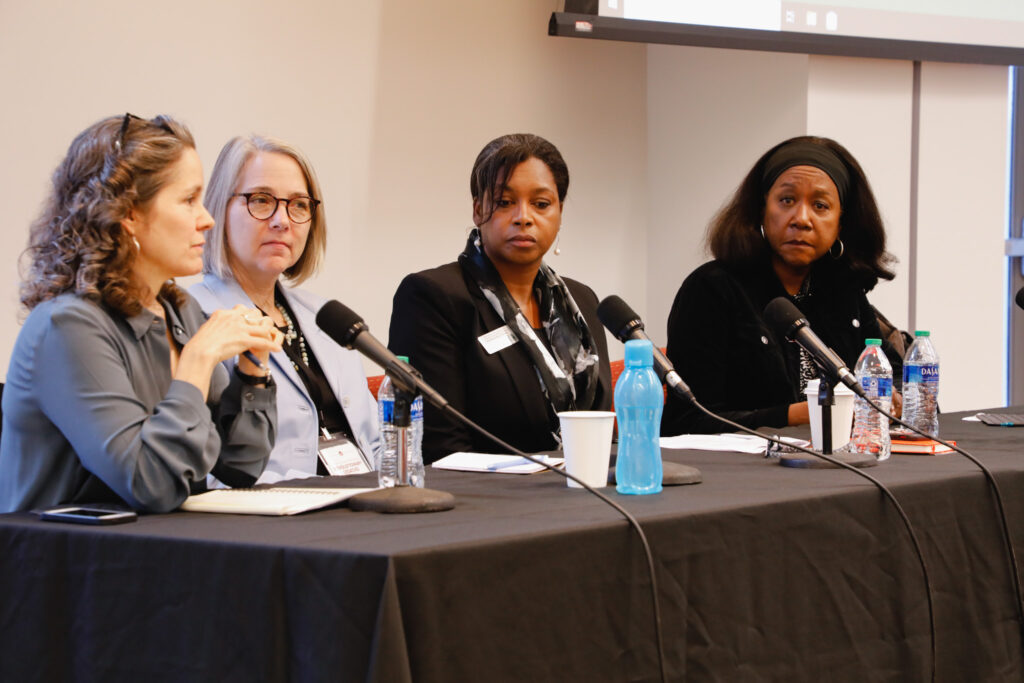It has been a full year since we publicly launched the Bray School Lab! In late October 2021, President Katherine Rowe (William & Mary) and President Cliff Fleet (The Colonial Williamsburg Foundation) provided updates on the Williamsburg Bray School Initiative and announced the launch of the W&M Bray School Lab in front of descendants, local officials, corporate partners, and other stakeholders. Since then, we have had a run of successful events and have learned a lot.
In January 2022, we launched the Bray School Lab website with staff profiles, basic operational information, and a Williamsburg Bray School Initiative overview. Because we were still laboring under the effects of COVID, we introduced the Bray School Lab and Strategic Cultural Partnerships team via a Virtual Meet & Greet in February. We also launched this blog, A Reasonable Progress, and we onboarded our initial student thought partners who took projects in transcription, story mapping, and bibliography and ran with them. In March, the Bray School Lab was represented at the Lemon Project Symposium which focused on the lived experiences of Black boys and men. In April, students in the Mason School of Business shared their marketing research and recommendations for the Lab. We ended the spring with a hybrid Descendant Outreach Week in May.

June was particularly busy, with Juneteenth celebrations on campus and in the community. At the same time, our “Discovering the Williamsburg Bray School” episode on the Ben Franklin’s World podcast went live. July and August were spent in research and historical imagining; one result was a contract with The Colonial Williamsburg Foundation to produce a book on the Bray School. It is tentatively titled, The Williamsburg Bray School Letters: A Community Speaks.
Fall has been our busiest season so far. In September, we publicly announced the Bray School book project which is designed to bring the Williamsburg Bray School story to life through archival research and community reflection. With October came our first Slate Seminar, the annual conference of the Bray School Lab, and the release of Adam & Fanny’s World, a digital story map created by one of our amazing student thought partners. Over the course of the year, we logged some 200+ hours of engagement by several student thought partners, advanced the work of the Lab considerably, and benefited from generous private and public support.

That is all great and very important. But what have we learned in the past year? Well, we have learned very much.
- Community engagement is hard work that cannot be accomplished overnight. Community engagement is the result of intentionality and persistence applied over time. We appreciate today, even more, various community members, community organizations, and university partners for their service and longevity. This is not work for the time being, this is an investment in the future and for the long haul.
- Partnership is critical to our success. I cannot think of how many times I have tried to solve a problem or imagine a pathway on my own, only to have my eyes opened by a conversation with one of our partners. I also cannot tell you how moved I have been by all those who have taken tours of the Bray School building, attended Bray School Lab presentations, personally connected with the Bray School as a descendant or general stakeholder, and gave to advance the Williamsburg Bray School story—no matter the amount. It is so true that you may go faster on your own, but you go farther with someone else.
- Students are some of our best idea generators. Students are incredible thought partners. Not only do they have enviable amounts of energy, but they also have amazing insight and imagination. As Bray School Lab Director, I love being a fly on the wall listening to students ask questions, posit theories, recommit to the research, and share with each other. They do not leave the same way we found them. And they often do not want to leave. Despite moving out of state, studying abroad, or graduating, student thought partners have consistently desired to remain connected with our work. I believe this is a barometer of the intellectual culture that is William & Mary, but I know this is also about the pull of the Williamsburg Bray School story and the more than 80 Black children that we know, to date, passed through.
For all these things and more, we are thankful—for the people, for the work, for the journey.
Dr. Maureen Elgersman Lee
Director, W&M Bray School Lab
Mellon Engagement Coordinator for African American Heritage
